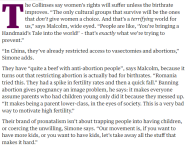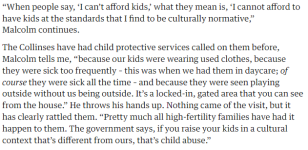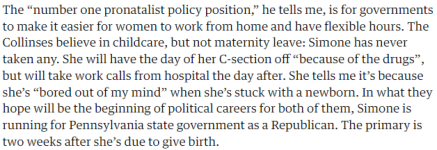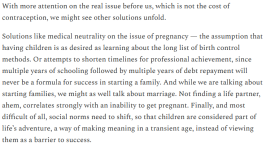It's a bust....
Why paying women to have more babies won’t work
Economies must adapt to baby busts instead
As birth rates plunge, many politicians want to pour money into policies that might lead women to have more babies. Donald Trump has vowed to dish out bonuses if he returns to the White House. In France, where the state already spends 3.5-4% of gdp on family policies each year, Emmanuel Macron wants to “demographically rearm” his country. South Korea is contemplating handouts worth a staggering $70,000 for each baby. Yet all these attempts are likely to fail, because they are built on a misapprehension.
Governments’ concern is understandable. Fertility rates are falling nearly everywhere and the rich world faces a severe shortage of babies. At prevailing birth rates, the average woman in a high-income country today will have just 1.6 children over her lifetime. Every rich country except Israel has a fertility rate beneath the replacement level of 2.1, at which a population is stable without immigration. The decline over the past decade has been faster than demographers expected.
Doomsayers such as Elon Musk warn that these shifts threaten civilisation itself. That is ridiculous, but they will bring profound social and economic changes. A fertility rate of 1.6 means that, without immigration, each generation will be a quarter smaller than the one before it. In 2000 rich countries had 26 over-65-year-olds for every 100 people aged 25-64. By 2050 that is likely to have doubled. The worst-affected places will see even more dramatic change. In South Korea, where the fertility rate is 0.7, the population is projected to fall by 60% by the end of the century.
The decision to have children is a personal one and should stay that way. But governments need to pay heed to rapid demographic shifts. Ageing and shrinking societies will probably lose dynamism and military might. They will certainly face a budgetary nightmare, as taxpayers struggle to finance the pensions and health care of legions of oldies.
Many pro-natalist policies come with effects that are valuable in themselves. Handouts for poor parents reduce child poverty, for instance, and mothers who can afford child care are more likely to work. However, governments are wrong to think it is within their power to boost fertility rates. For one thing, such policies are founded on a false diagnosis of what has so far caused demographic decline. For another, they could cost more than the problems they are designed to solve.
One common assumption is that falling fertility rates stem from professional women putting off having children. The notion that they run out of time to have as many babies as they wish before their childbearing years draw to a close explains why policies tend to focus on offering tax breaks and subsidised child care. That way, it is argued,
women do not have to choose between their family and their career.
That is not the main story. University-educated women are indeed having children later in life, but only a little. In America their average age at the birth of their first child has risen from 28 in 2000 to 30 now. These women are having roughly the same number of children as their peers did a generation ago. This is a little below what they say is their ideal family size, but the gap is no different from what it used to be.
Instead, the bulk of the
decline in the fertility rate in rich countries is among younger, poorer women who are delaying when they start to have children, and who therefore have fewer overall. More than half the drop in America’s total fertility rate since 1990 is caused by a collapse in births among women under 19. That is partly because more of them are going to college. But even those who leave education after high school are having children later. In 1994 the average age of a first-time mother without a university degree was 20. Today, about two-thirds of women without degrees in their 20s are yet to have their first child.
Some politicians may seize on this to aim baby-boosting policies at very young women. They may be tempted, too, by evidence that poorer women respond more to financial incentives. But focusing on young and poor women as a group would be bad for them and for society. Teenage pregnancies are linked to poverty and ill health for both mother and child. Targeted incentives would roll back decades of efforts to curb unwanted teenage pregnancy and encourage women into study and work. Those efforts, along with programmes to enhance gender equality, rank among the greatest public-policy triumphs of the postwar era.
Some illiberal governments, such as those of Hungary and Russia, may choose to ignore this progress. Yet they face a practical problem, because government incentives do not seem to bring lots of extra babies even as spending mounts. Sweden offers an extraordinarily generous child-care programme, but its total fertility rate is still only 1.7. Vast amounts of money are needed to encourage each extra baby. And handouts tend to go to all babies, including those who would have been born anyway. As a result, schemes in Poland and France cost $1m-2m per extra birth. Only a tiny number of citizens are productive enough to generate fiscal benefits to offset that kind of money. Due to low social mobility only 8% of American children born to parents without bachelor’s degrees end up getting such a degree themselves.
Older, but wiser
What, then, can governments do? High-skilled immigration can plug fiscal gaps, but not indefinitely, given that fertility is falling globally. Most economies will therefore have to adapt to social change, and it falls to governments to smooth the way. Welfare states will need rethinking: older people will have to work later in life, for instance, to cut the burden on the public purse. The invention and adoption of new technologies will need to be encouraged. These could make the demographic transition easier by unleashing economy-wide productivity growth or helping care for the old. New household technologies may help parents, rather as dishwashers and washing machines did in the mid-20th century. Baby-boosting policies, by comparison, are a costly and socially retrograde mistake.
Economies must adapt to baby busts instead

www.economist.com












